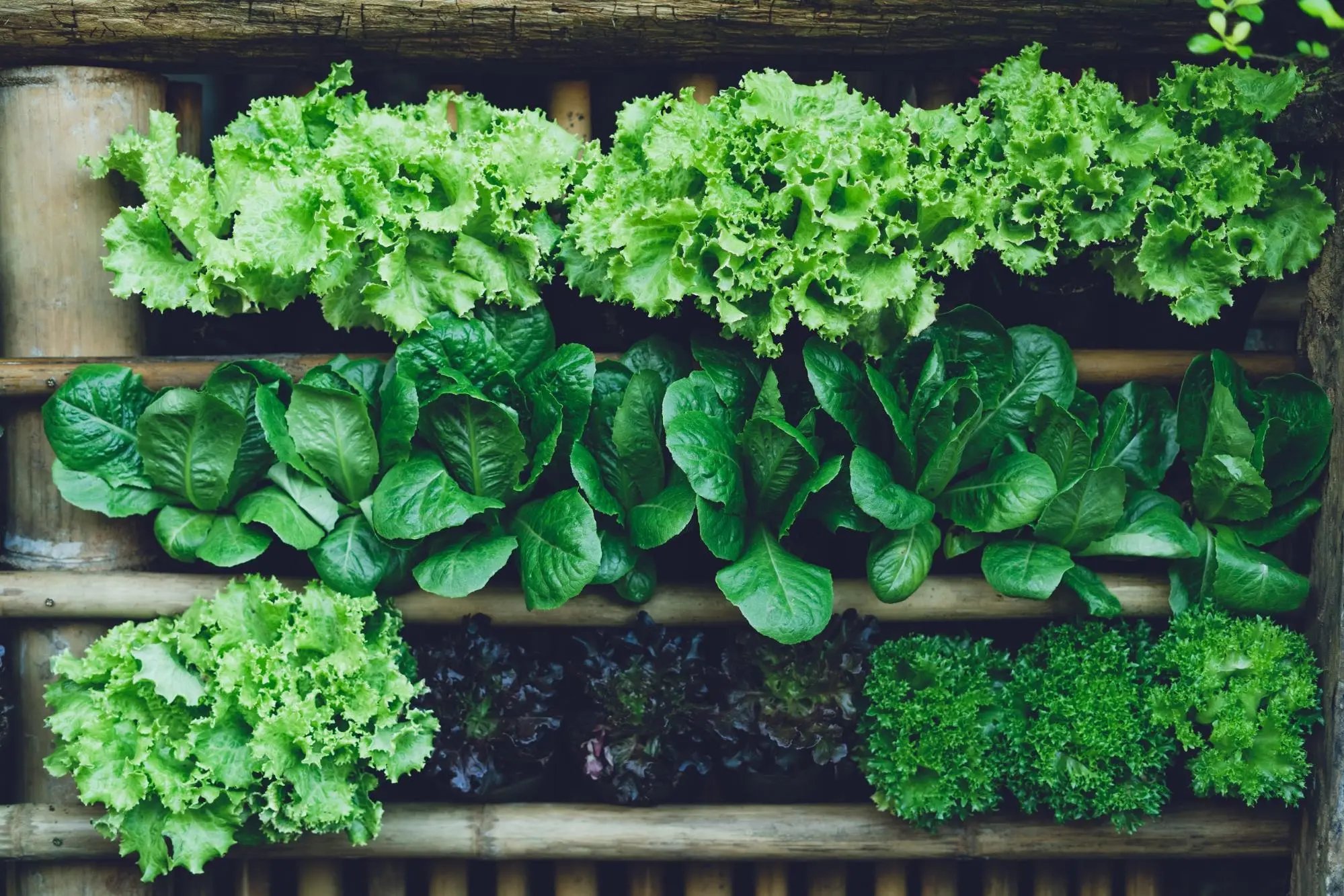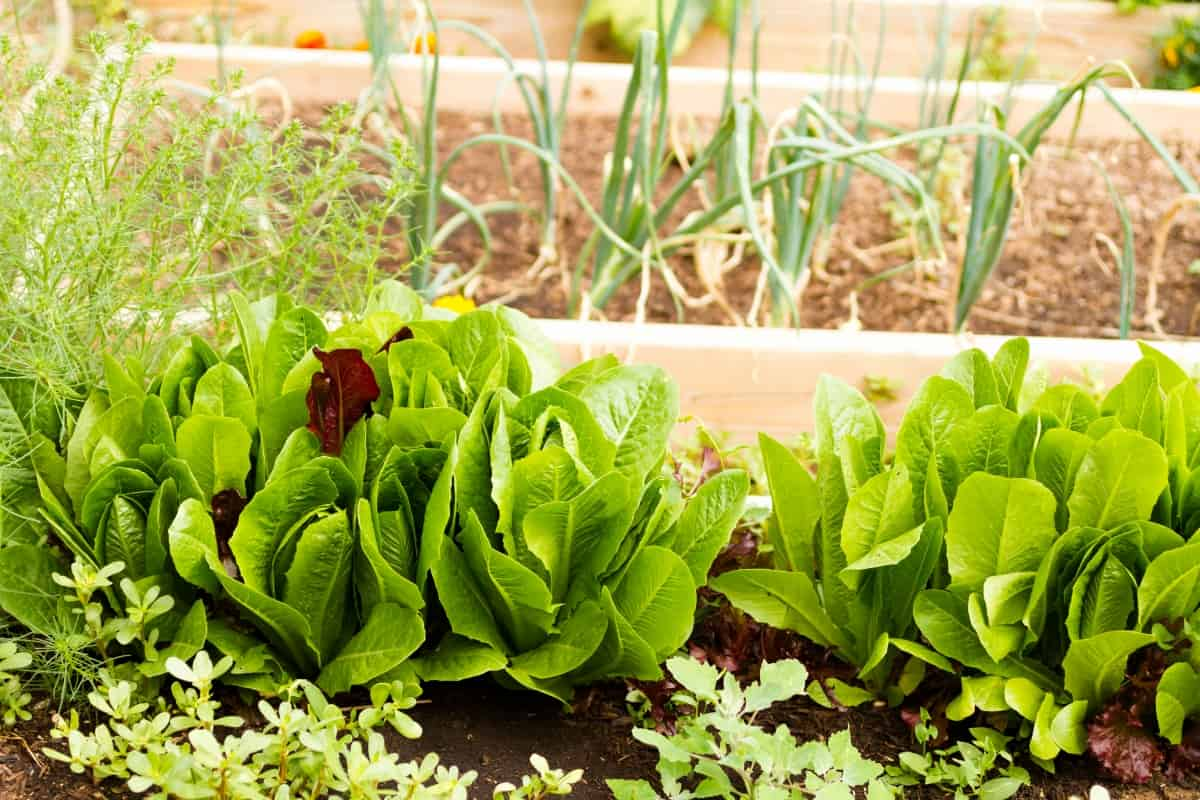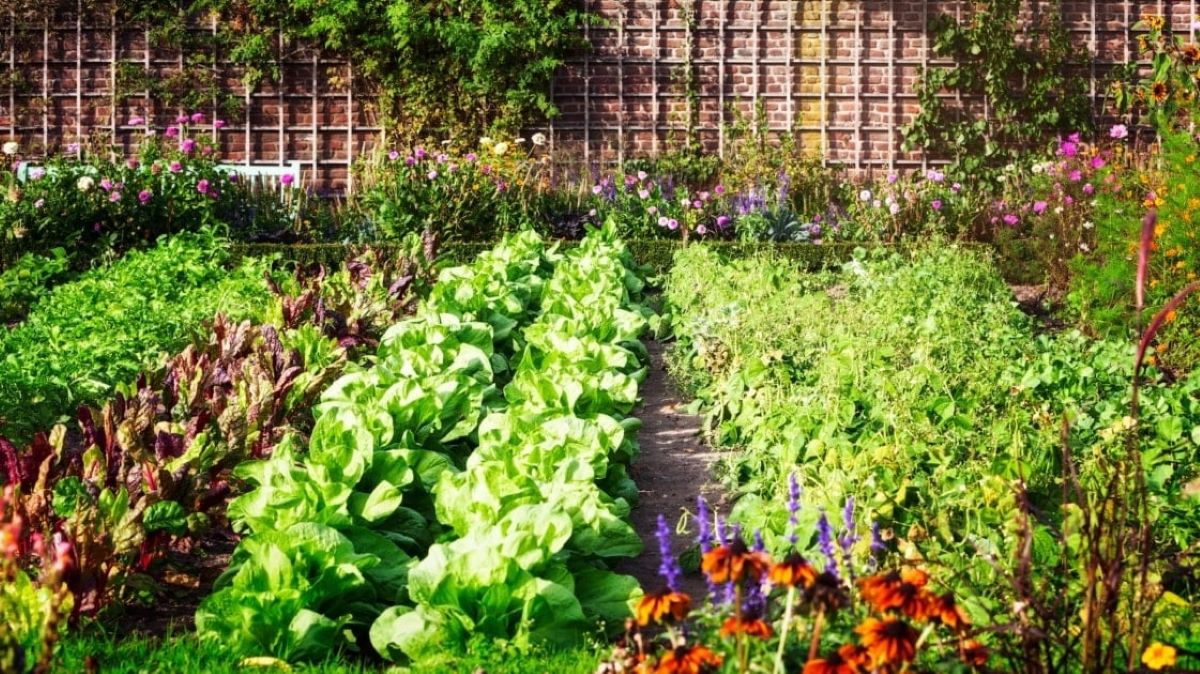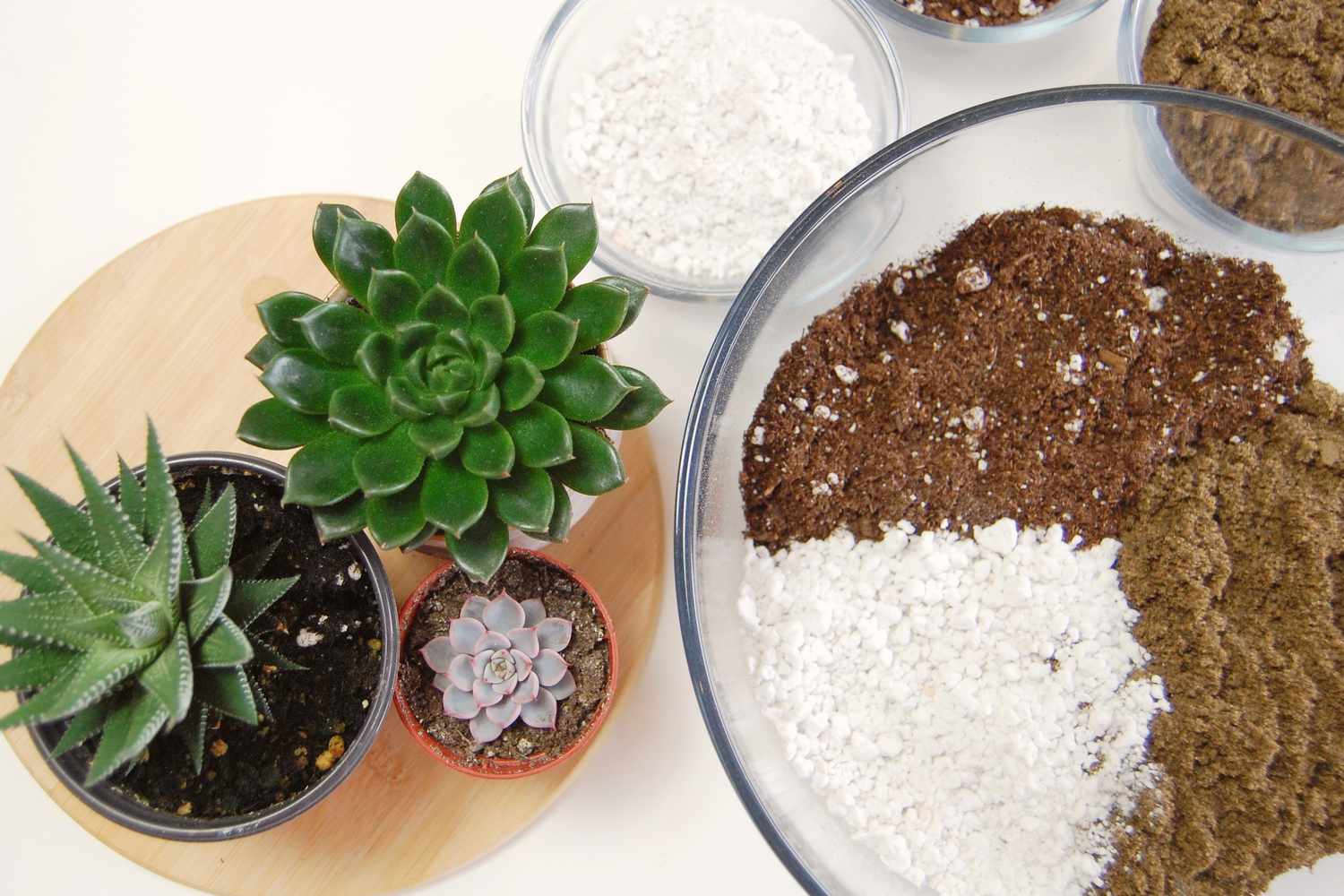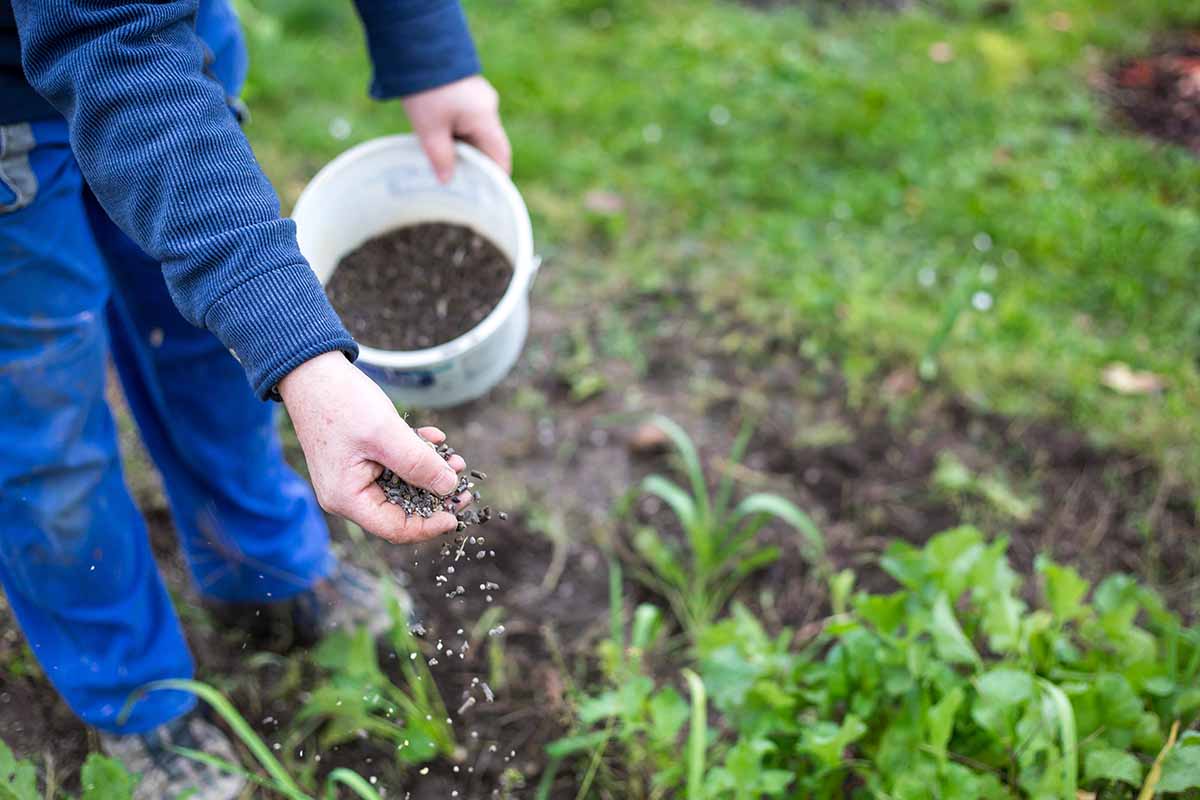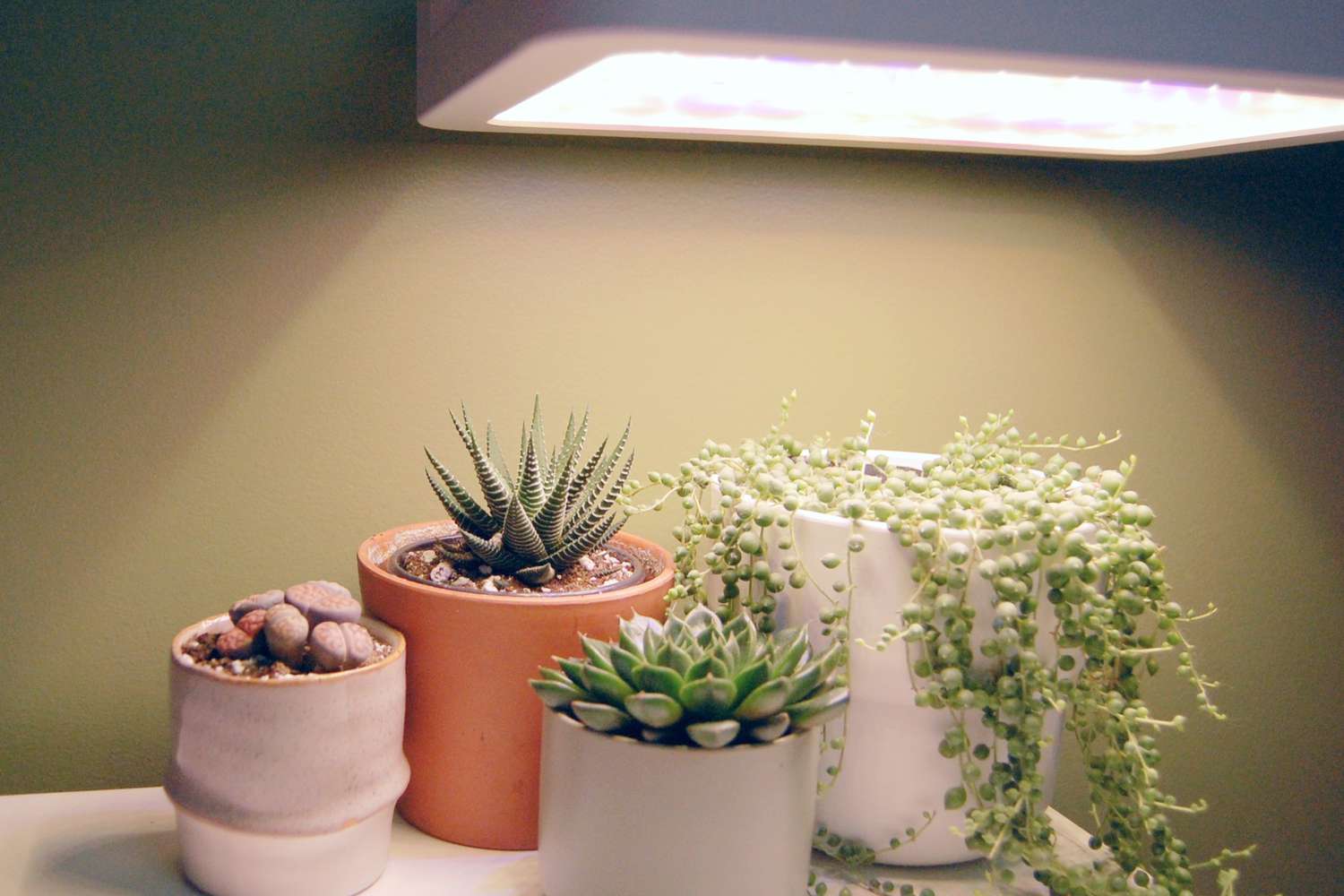Home>Gardening News and Trends>Latest News>What Is The Best Soil For Growing Vegetables
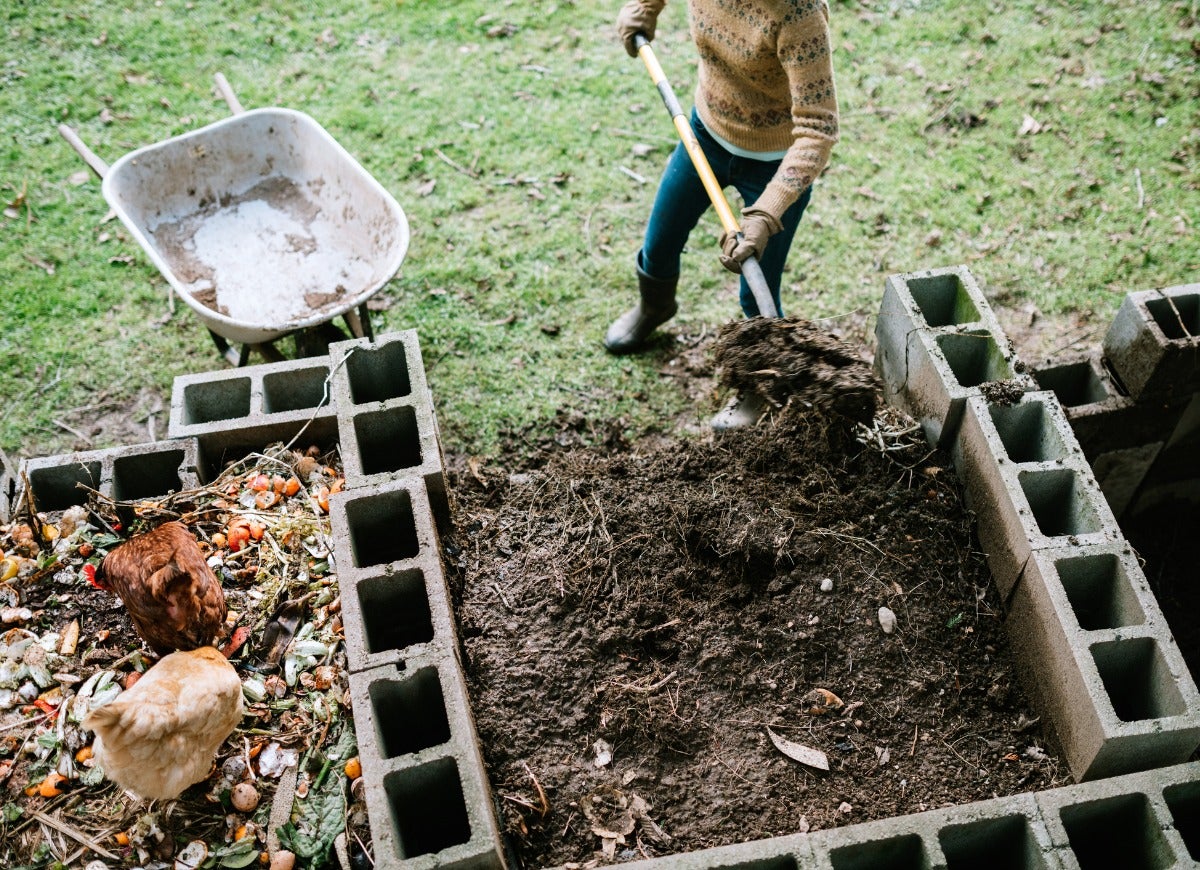

Latest News
What Is The Best Soil For Growing Vegetables
Modified: February 10, 2024
Discover the latest news on the best soil for growing vegetables. Learn expert tips and techniques to enhance your vegetable garden's success.
(Many of the links in this article redirect to a specific reviewed product. Your purchase of these products through affiliate links helps to generate commission for Chicagolandgardening.com, at no extra cost. Learn more)
Table of Contents
- Introduction
- Importance of Soil for Growing Vegetables
- What Makes a Good Soil for Vegetable Gardening?
- Understanding Soil pH Levels
- Soil Texture: Clay, Silt, and Sand
- Organic Matter and Soil Fertility
- Nutrient Requirements for Vegetable Plants
- Soil Drainage and Moisture Retention
- Improving the Soil for Vegetable Gardening
- Testing and Amending Your Soil
- Conclusion
Introduction
Growing your own vegetables can be a rewarding and fulfilling endeavor. Not only does it allow you to enjoy fresh and nutritious produce, but it also gives you a sense of accomplishment and connection to nature. However, before you embark on your vegetable gardening journey, it’s important to understand the significance of soil and its impact on the success of your plants.
The soil serves as the foundation for your vegetable garden, providing essential nutrients, moisture, and support for plant growth. Choosing the right soil and ensuring its quality are crucial steps in setting up your garden for success. In this article, we will explore the importance of soil for growing vegetables and discuss the key factors that make up a good soil for vegetable gardening.
By understanding these factors, you can create an optimal environment for your vegetables to thrive and yield bountiful harvests. Whether you are a novice gardener or an experienced green thumb, this knowledge will empower you to make informed decisions and maximize the potential of your vegetable garden.
Let’s dive in and discover the world beneath our feet that plays an essential role in the growth and development of our beloved vegetables.
Importance of Soil for Growing Vegetables
The soil is the lifeblood of any garden, and this holds true for vegetable gardens as well. It provides the necessary nutrients, water, and support that plants need to grow and thrive. Understanding the importance of soil in vegetable gardening is crucial for successful cultivation.
First and foremost, soil acts as a reservoir for water and nutrients. When watered, the soil retains moisture, ensuring that your vegetable plants have a constant water supply even in dry spells. It also stores essential nutrients like nitrogen, phosphorus, and potassium, which are essential for plant growth and development. These nutrients are slowly released to the plants, providing them with a continuous source of nourishment.
Furthermore, the structure of the soil affects root development. Loose and well-aerated soil allows roots to penetrate deeply and spread out, providing a solid anchor for plants and allowing them to access nutrients and water more efficiently. Conversely, compacted or clayey soil can impede root growth and restrict the absorption of essential elements.
Soil pH is another crucial factor. It determines the availability of nutrients to plants. Different vegetable plants have varying pH preferences, ranging from acidic to alkaline. Understanding the pH requirements of your chosen vegetables will help you adjust the soil accordingly, ensuring optimal nutrient uptake.
In addition, soil composition also plays a role in disease prevention. Certain soil types or conditions can promote or hinder the growth of harmful pathogens. By choosing and maintaining a healthy soil, you can create an environment less conducive to disease development, reducing the risk of plant illnesses and pest infestations.
Furthermore, the quality of the soil directly impacts the flavor and nutritional value of the vegetables produced. Nutrient-dense soil will result in vegetables that are more vibrant, flavorful, and packed with essential vitamins and minerals.
Creating and maintaining fertile soil is a long-term investment in the success of your vegetable garden. With the right soil conditions, your plants will have the best chance to grow vigorously, produce abundant yields, and resist various environmental stresses.
What Makes a Good Soil for Vegetable Gardening?
A good soil for vegetable gardening is one that provides a balanced combination of nutrients, proper drainage, ideal pH levels, and suitable texture. Here are some key factors that contribute to a good soil for vegetable gardening:
- Nutrient-rich: Vegetable plants require a range of nutrients to grow and produce healthy yields. A good soil should contain essential nutrients such as nitrogen, phosphorus, and potassium, as well as micronutrients like calcium, magnesium, and iron. Adding organic matter such as compost, well-rotted manure, or organic fertilizers can help replenish and maintain nutrient levels in the soil.
- Well-drained: Proper drainage is crucial for vegetable plants as excessive moisture can lead to root rot and other diseases. Ideally, the soil should be well-drained to allow excess water to flow away while retaining enough moisture for the plants. Sandy or loamy soil types are generally more suitable for good drainage.
- Optimal pH: The pH level of the soil affects nutrient availability to plants. Most vegetables prefer a slightly acidic to neutral pH range of 6.0 to 7.0. Conducting a soil pH test can help you determine if your soil needs any adjustments. Adding materials like lime or sulfur can help bring the pH to the desired range.
- Good texture: Soil texture refers to the composition of sand, silt, and clay particles in the soil. A good soil for vegetable gardening should have a balanced texture. Sandy soil drains well but may require more frequent watering and nutrient supplementation. Clay soil retains moisture but can become compacted, limiting root growth. Loamy soil, which is a balanced mix of sand, silt, and clay, is considered ideal for vegetable gardening as it provides good drainage while retaining adequate moisture and nutrients.
- Organic matter: Incorporating organic matter into the soil improves its structure and fertility. It helps with moisture retention and nutrient availability, promotes beneficial microbial activity, and enhances overall soil health. Adding compost, leaf mold, or well-rotted organic matter can enrich the soil and create an environment conducive to healthy plant growth.
By ensuring that your soil meets these criteria, you will provide your vegetable plants with an optimal growing environment. Regular soil testing and amending, as necessary, will help maintain the quality and productivity of your soil throughout the growing season.
Understanding Soil pH Levels
The pH level of soil refers to its acidity or alkalinity, which greatly affects the availability of nutrients to plants. Understanding soil pH levels is essential for successful vegetable gardening, as different plants have specific pH preferences.
The pH scale ranges from 0 to 14, with 7 being neutral. A pH below 7 indicates acidity, while a pH above 7 indicates alkalinity. Most vegetables prefer slightly acidic to neutral soil, with a pH range of 6.0 to 7.0. However, it is important to note that specific plants may have individual pH requirements, so it’s worth researching the ideal pH levels for the vegetables you plan to grow.
When the soil is too acidic or too alkaline, certain nutrients become less available to plants. This can lead to nutrient deficiencies, despite having sufficient nutrients present in the soil. For example, if the soil is highly acidic, essential nutrients like calcium, magnesium, and phosphorus may become locked up and unavailable for plant uptake.
To determine the pH level of your soil, you can use a home testing kit or send a sample to a professional laboratory for analysis. Soil pH testing kits provide a quick and convenient way to get an approximate reading. However, for the most accurate results, a professional laboratory analysis is recommended.
If your soil pH is too acidic, you can raise it by adding amendments such as agricultural lime or wood ashes. Conversely, if the soil pH is too alkaline, you can lower it by incorporating elemental sulfur or aluminum sulfate. However, it’s important to make adjustments gradually and retest the soil periodically to ensure the pH remains within the desired range.
For maintaining optimal soil pH, it is crucial to practice regular soil testing. This will help you monitor any changes in pH levels and make necessary adjustments. Additionally, incorporating organic matter like compost into the soil can help stabilize pH levels and improve overall soil health.
By understanding and managing soil pH levels, you can create an environment that allows your vegetable plants to thrive and absorb essential nutrients, resulting in healthy growth and abundant harvests.
Soil Texture: Clay, Silt, and Sand
Soil texture refers to the relative proportions of sand, silt, and clay particles in the soil. Understanding soil texture is important in vegetable gardening as it greatly influences drainage, water-holding capacity, and nutrient availability.
Clay: Clay particles are the smallest among the three soil types. They are tightly packed together, resulting in poor drainage and a tendency to become compacted. Clay soils tend to retain water for longer periods, which can lead to waterlogged conditions and hinder root growth. However, clay soils can also hold onto nutrients more effectively than other soil types.
Silt: Silt particles are larger than clay particles and smaller than sand particles. Silt soils have moderate drainage and higher water-holding capacity compared to sandy soils. They have a smoother texture and tend to be more fertile due to their ability to retain nutrients. However, silt soils can become compacted and may require amendments for improved drainage.
Sand: Sand particles are the largest among the three soil types, resulting in well-draining soil with high permeability. Sandy soils do not hold water well and can dry out quickly. They are light and loose in texture, promoting good aeration and root development. However, sandy soils also tend to have lower nutrient-holding capacity and may require additional amendments and frequent fertilization.
In practice, most soils fall within a range of textures, with varying degrees of sand, silt, and clay. Loam soil is often considered the ideal soil texture for vegetable gardening. It is a balanced mixture of sand, silt, and clay, providing good drainage, moisture retention, and nutrient availability.
To determine the texture of your soil, you can perform a simple soil texture test. Take a handful of moist soil and squeeze it in your hand. If it falls apart easily and feels gritty, it is sandy soil. If it holds its shape but crumbles when touched, it is loam soil. If it feels smooth and sticky and retains its shape, it is clay soil. By understanding your soil texture, you can tailor your gardening practices and amendments to best suit your soil’s characteristics.
When working with clay soil, incorporating organic matter like compost can help improve drainage and soil structure. For sandy soil, amendments such as compost, organic matter, or well-rotted manure can help increase its water-holding capacity and nutrient retention. For silt soils, aerating the soil and avoiding over-watering can help prevent compaction.
By understanding and working with the soil texture in your vegetable garden, you can create optimal growing conditions for your plants and ensure their overall health and productivity.
Organic Matter and Soil Fertility
Organic matter plays a critical role in soil fertility and the overall health of a vegetable garden. It is composed of decomposed plant material, such as leaves, grass clippings, and kitchen scraps, as well as animal manure. Incorporating organic matter into the soil provides numerous benefits for vegetable plants.
Improved Soil Structure: Organic matter helps improve soil structure by binding soil particles together, creating aggregates. This creates pore spaces in the soil, promoting good drainage and aeration. The improved soil structure allows roots to penetrate easily, facilitating nutrient uptake and the movement of water through the soil.
Enhanced Nutrient Availability: Organic matter contains essential nutrients and acts as a slow-release fertilizer. As it decomposes, nutrients are gradually released into the soil, providing a steady supply of nutrients to the vegetable plants. Organic matter also increases the cation exchange capacity (CEC) of the soil, which refers to its ability to retain and exchange nutrients, making them more available to plants.
Promotion of Beneficial Microorganisms: Organic matter serves as a food source for beneficial soil microorganisms. These microorganisms, such as bacteria, fungi, and earthworms, break down organic matter further and release enzymes and components that enhance nutrient cycling and soil fertility. The presence of these microorganisms also helps suppress harmful pathogens and diseases in the soil.
Enhanced Water Retention: Organic matter acts as a sponge, helping the soil retain moisture. As it absorbs and retains water, it provides a buffer against drought conditions, ensuring that vegetable plants have sufficient moisture even during dry periods. This reduces the need for frequent watering and promotes more efficient water use in the garden.
Reduction of Soil Erosion: The addition of organic matter improves soil structure and stability, reducing the risk of erosion caused by wind or water. It helps bind soil particles together, preventing them from being carried away by rainfall or strong winds, which can protect the integrity and productivity of your vegetable garden.
There are various ways to incorporate organic matter into the soil. You can add compost, well-rotted manure, cover crops, or organic mulches like straw or shredded leaves. These amendments can be applied at the beginning of the growing season or throughout the year as needed.
Regularly replenishing organic matter in your vegetable garden is necessary as it decomposes over time. By maintaining a well-balanced level of organic matter, you can ensure optimal soil fertility and create a thriving environment for your vegetable plants to grow and produce nutritious harvests.
Nutrient Requirements for Vegetable Plants
Vegetable plants have specific nutrient requirements to grow, develop, and produce abundant yields. Understanding these nutrient requirements is essential for maintaining healthy and productive vegetable gardens. Here are some key nutrients that vegetable plants need:
Nitrogen (N): Nitrogen is crucial for vegetative growth, leaf development, and overall plant vigor. It is responsible for promoting the green color of leaves and stimulating the production of proteins and enzymes. Vegetable plants with insufficient nitrogen may exhibit stunted growth, yellowing leaves, and reduced yields. Good sources of nitrogen include well-composted manure, nitrogen-rich fertilizers, and legume cover crops.
Phosphorus (P): Phosphorus is essential for root development, flowering, and fruiting. It aids in energy transfer and promotes the formation of strong root systems. Insufficient phosphorus can lead to poor root growth, reduced flower and fruit production, and delayed maturity. Adding phosphorus-rich amendments like bone meal or rock phosphate can help meet the phosphorus needs of vegetable plants.
Potassium (K): Potassium is necessary for overall plant health, disease resistance, and the transportation of nutrients and water within the plant. It promotes root development, improves drought tolerance, and enhances the quality of fruits and vegetables. Vegetable plants deficient in potassium may display weak stems, yellowing or browning leaf edges, and reduced yields. Potassium can be supplied to plants through organic fertilizers, such as wood ash or potassium sulfate.
Calcium (Ca): Calcium is essential for cell division and structure, promoting strong cell walls and preventing disorders like blossom end rot in tomatoes and peppers. It is crucial for root development and nutrient uptake, as well as preventing soil acidity. Adding sources of calcium, such as agricultural lime or gypsum, helps maintain adequate levels of calcium in the soil for vegetable plants.
Magnesium (Mg): Magnesium is a key component of chlorophyll, which is vital for photosynthesis and overall plant energy production. It plays a significant role in the utilization of other essential nutrients by vegetable plants. Magnesium deficiency can result in yellowing between leaf veins and poor plant growth. Epsom salt, which is magnesium sulfate, can be applied as a supplemental magnesium source.
Other Micronutrients: Vegetable plants also require small amounts of micronutrients such as iron, manganese, zinc, copper, boron, and molybdenum. Although they are needed in trace amounts, micronutrients are essential for various physiological processes in plants. To ensure sufficient micronutrient availability, incorporating well-balanced organic fertilizers and maintaining proper soil pH levels is crucial.
It is important to note that the nutrient requirements for different vegetable plants may vary. Some vegetables, such as leafy greens, have high nitrogen requirements, while others like tomatoes may have higher phosphorus requirements. Understanding the specific nutrient needs of each vegetable plant will allow you to tailor your fertilization practices and amendments accordingly.
Regular soil testing can help identify nutrient deficiencies or imbalances in your vegetable garden. Based on the results, you can adjust your fertilization practices and incorporate organic fertilizers or soil amendments to meet the nutrient requirements of your plants. Providing the right balance of nutrients will promote healthy growth, maximize yields, and enhance the quality of your harvested vegetables.
Soil Drainage and Moisture Retention
Proper soil drainage and moisture retention play crucial roles in the success of a vegetable garden. The ability of the soil to efficiently drain excess water while retaining adequate moisture is essential for healthy plant growth and development. Understanding these factors and managing them appropriately can help create an optimal environment for your vegetable plants.
Soil Drainage: Good soil drainage is essential to prevent waterlogged conditions, which can lead to root rot and hinder plant growth. Excessive moisture in the soil prevents oxygen from reaching the roots, suffocating the plants. To assess the drainage of your soil, observe how quickly water disperses after heavy rainfall or irrigation. If the water stands for prolonged periods or drains slowly, you may have poorly drained soil. To improve drainage, consider incorporating organic matter, such as compost or perlite, to lighten heavy clay soils.
Moisture Retention: While drainage is important, the soil also needs to retain sufficient moisture for plant uptake. Adequate moisture is critical for germination, nutrient absorption, and overall plant health. Sandy soils tend to drain quickly and may require more frequent watering to prevent drying out. On the other hand, clay soils retain moisture for longer periods but can become waterlogged. Adding organic matter, such as compost or well-rotted manure, to the soil can help improve water retention and regulate moisture levels.
Striking a balance between soil drainage and moisture retention is key to maintaining optimal soil moisture levels. Mulching the soil surface with organic materials, such as straw or wood chips, can help conserve moisture by reducing evaporation and preventing weed growth. It also acts as a barrier against extreme temperature fluctuations, protecting the roots of your vegetable plants.
Regularly monitoring soil moisture levels is important in managing irrigation. Too little water can stress the plants and negatively impact growth, while overwatering can lead to root diseases and nutrient leaching. Checking the moisture content by inserting your finger or a moisture meter into the soil can help determine when watering is needed. In hot and dry climates, watering deeply and less frequently is generally recommended to encourage deep root growth.
Understanding the specific needs of your vegetable plants is also important in managing soil moisture. Some vegetables, like tomatoes, require more consistent moisture throughout their growing season, while others, such as onions or cacti, are more drought-tolerant. Taking into account the specific moisture requirements of your vegetables will help you tailor your watering practices accordingly.
Incorporating proper soil drainage and moisture retention techniques in your vegetable garden will create an environment where plants can thrive and reach their full potential. By ensuring that your soil provides adequate drainage while retaining sufficient moisture, you are setting the stage for healthy and productive vegetable plants.
Improving the Soil for Vegetable Gardening
Improving the soil in your vegetable garden is an ongoing process that can greatly enhance the health and productivity of your plants. By taking steps to improve the soil structure, fertility, and overall quality, you create an optimal environment for your vegetable plants to thrive. Here are some key strategies to consider when improving the soil for vegetable gardening:
Organic Matter: Incorporating organic matter is one of the most effective ways to improve soil fertility and structure. Adding compost, well-rotted manure, or other forms of organic matter helps increase nutrient content, improve moisture retention, enhance soil structure, and promote beneficial microbial activity. Apply organic matter regularly, either by mixing it into the soil before planting or by top-dressing around existing plants.
Cover Crops: Planting cover crops, such as legumes or grasses, during fallow periods can help improve soil health by adding organic matter, fixing nitrogen, preventing erosion, and suppressing weeds. Cover crops can be grown specifically to fulfill certain soil improvement objectives, such as increasing nitrogen levels or breaking up compacted soil. When the cover crops are ready, they can be turned into the soil to decompose and enrich it.
Soil Amendments: Soil amendments can be used to address specific soil deficiencies or imbalances. Conducting a soil test can help identify nutrient deficiencies or pH imbalances, and amendments can be added accordingly. Common soil amendments include lime to raise pH, sulfur to lower pH, gypsum for improving clay soils, and bone meal or rock phosphate for increasing phosphorus levels.
Mulching: Mulching the soil surface with organic materials, such as straw, shredded leaves, or wood chips, has multiple benefits. Mulch helps conserve soil moisture by reducing evaporation, suppresses weeds, moderates soil temperature, and improves soil structure as it decomposes over time. Apply a layer of mulch around your vegetable plants, leaving space around the plant stems to prevent moisture-related diseases.
Crop Rotation: Implementing a crop rotation plan can help prevent soil diseases and nutrient depletion. By rotating vegetable families, you reduce the build-up of pests and diseases specific to certain plants and ensure a more balanced nutrient uptake. Different vegetable families have different nutrient requirements, so rotating crops helps prevent depletion of specific nutrients in the soil.
Reduced Tillage: Excessive tilling can disrupt soil structure, contribute to erosion, and deplete organic matter. Consider minimizing or adopting reduced tillage practices, such as using a no-till or low-till approach. This preserves soil structure, promotes soil life, and maintains the integrity of organic matter. Instead of tilling, use methods like hand-digging or shallow cultivation to minimize soil disturbance.
Regular Soil Testing: Conducting regular soil testing is crucial for understanding your soil’s nutrient content and pH levels. Soil testing provides valuable information on nutrient deficiencies or excesses, pH imbalances, and organic matter content. It helps you make targeted amendments and adjustments to ensure the soil is in the optimal range for vegetable growth.
Each step you take to improve the soil in your vegetable garden contributes to the overall health and productivity of your plants. By incorporating organic matter, using appropriate amendments, implementing crop rotation, and practicing reduced tillage, you create a soil environment that supports thriving and fruitful vegetable plants.
Testing and Amending Your Soil
Testing and amending your soil is a critical step in maintaining optimal conditions for vegetable gardening. Soil testing allows you to assess nutrient levels, pH levels, and other key factors that impact plant growth. Once you have the test results, you can make informed decisions about soil amendments to ensure that your vegetables receive the necessary nutrients for healthy growth and productivity.
Soil Testing: Soil testing is typically done by collecting a soil sample from your garden and sending it to a laboratory for analysis. The laboratory will provide a detailed report that includes information on nutrient levels, soil pH, organic matter content, and other relevant data. Soil testing kits are also available for home use, which can provide a basic assessment of nutrient levels and soil pH. Regular soil testing, ideally once a year, allows you to monitor changes in soil fertility over time.
Interpreting Test Results: Understanding soil test results is crucial for making appropriate amendments. The report will indicate the levels of important nutrients such as nitrogen, phosphorus, potassium, as well as other key elements. It will also provide recommendations for adjusting pH if necessary. By comparing the test results to recommended ranges for vegetable gardening, you can identify any deficiencies or imbalances and develop a targeted plan for soil improvement.
Amending the Soil: Once you have identified any deficiencies or imbalances, you can take the necessary steps to amend the soil. Common soil amendments include adding organic matter, such as compost or well-rotted manure, to improve soil structure and nutrient content. You can also incorporate specific fertilizers based on the nutrient requirements outlined in the soil test report. To adjust pH levels, you can use materials like agricultural lime to raise pH or elemental sulfur to lower pH, following the recommended guidelines based on your soil test results.
Timing of Amendments: It is best to amend the soil well in advance of planting, allowing the amendments to mix with the soil and provide ample time for any necessary chemical reactions to occur. Organic amendments should be added several weeks to months prior to planting, while some mineral amendments can be applied just before planting. Follow the guidelines provided by the soil test report and consider incorporating amendments during the preparation of the garden bed or as part of crop rotation strategies.
Monitoring and Re-Testing: After amending the soil, it is important to monitor the nutrient levels and pH over time. Regularly observing plant growth, foliage color, and disease resistance can provide insights into the overall health of your plants. Conducting periodic soil tests, ideally once a year, will help determine the effectiveness of your soil amendments and guide any necessary adjustments for the following growing seasons.
Testing and amending your soil is an essential practice in vegetable gardening. By understanding your soil’s nutrient levels, pH, and other characteristics, you can make informed decisions to optimize soil fertility and create an ideal environment for healthy and productive vegetable plants.
Conclusion
Growing vegetables successfully relies heavily on the quality and condition of the soil in your garden. By understanding the importance of soil and implementing strategies to improve its fertility and structure, you can create an optimal environment for your vegetable plants to thrive.
The soil provides the essential nutrients, moisture, and support that vegetable plants need to grow, develop, and produce abundant yields. Factors like soil pH, texture, drainage, and moisture retention play crucial roles in determining the health and productivity of your plants.
Testing your soil through regular soil testing allows you to identify any nutrient deficiencies or imbalances, helping you make informed decisions about soil amendments. Incorporating organic matter, such as compost and well-rotted manure, can significantly enhance soil fertility, improve moisture retention, and promote beneficial microbial activity.
Understanding the specific nutrient requirements of your vegetable plants and adjusting your fertilization practices accordingly ensures that they receive the necessary nutrients to support growth and maximize yields. Additionally, managing soil drainage and moisture retention through techniques like mulching, cover cropping, and proper watering practices helps create an environment that promotes root development and minimizes the risk of diseases.
Regularly monitoring and maintaining soil health is an ongoing process. By incorporating sustainable practices like crop rotation, reduced tillage, and proper soil testing, you can sustain the fertility and health of your soil for long-term vegetable gardening success.
Remember, building and maintaining healthy soil is a journey. It requires patience, observation, and adaptation to the specific needs of your vegetable plants. With dedication and attention to soil quality, you can create a thriving vegetable garden and enjoy the rewards of freshly harvested, nutritious, and delicious homegrown vegetables.


